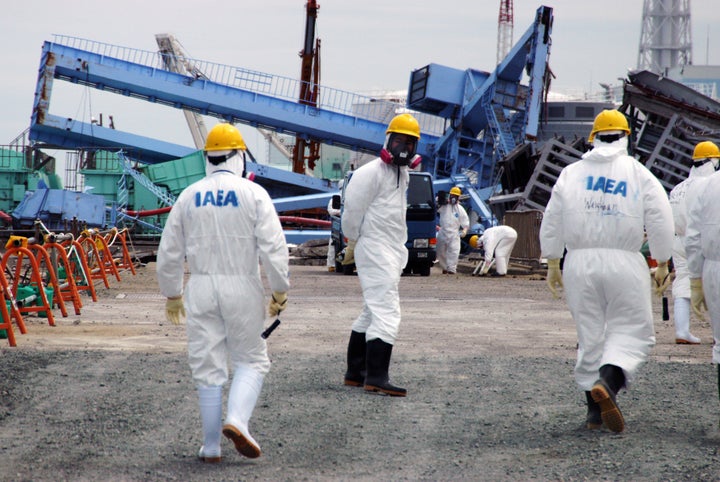
Shown here, members of an International Atomic Energy Agency (IAEA) Fact-Finding Mission in Japan, visiting the Fukushima Daiichi Nuclear Power Plant in 2011 to assess tsunami damage and study nuclear safety lessons that could be learned from the accident.
By Robert Glasser*
The Oroville Dam’s structural weakness and the forced evacuation of 200,000 people living in its shadow has seen renewed interest in President Trump’s campaign promise to invest in resilient infrastructure across the United States.
The White House spokesperson, Sean Spicer, raised the issue last week when he said the Oroville dam situation “is a text book example of why we need to pursue a major infrastructure package in Congress. Dams, bridges, roads and all ports around the country have fallen into disrepair.
“In order to prevent the next disaster we will pursue the President’s vision for an overhaul of our nation’s crumbling infrastructure.”
Mr. Spicer and President Trump have tapped into one of the key priorities identified by UN Member States two years ago when they adopted a new framework agreement which sets global targets for reducing disaster losses including deaths, numbers of disaster affected people and damage to critical infrastructure,
Preventing the next disaster is at the heart of the Sendai Framework for Disaster Risk Reduction which was negotiated with the participation of the United States and other UN Member States, and enthusiastically welcomed into being by the Japanese Prime Minster, Mr. Shinzo Abe, who recently visited President Trump.
Two years ago, Prime Minister Abe, unveiled a package of support for the development of disaster-proof infrastructure valued at US$4 billion, and said: “Disaster risk reduction is the most important challenge for both developed and developing countries. For developing countries in particular, where 90% of disaster victims are concentrated.”
There is growing support for the idea that resilience has to be embedded in the business planning for new cities and towns as never before, given the plethora of risks which rapid urbanization and population growth in disaster-prone parts of the world can bring in their wake.
The Oroville dam, the highest dam in the United States, represented the pinnacle of engineering innovation when it was constructed 60 years ago but recent events have shown that climate variability and a violent swing from drought to floods can put even such a vaunted structure under formidable pressure and place at risk the lives, homes and livelihoods of people living nearby.
It emphasizes once again how hazards no longer come in simple natural guises such as storms and earthquakes but are often embedded in the very technology and structures we depend on for daily survival.
This was brought home forcibly in 2011 as a result of the triple disaster triggered by the Great East Japan Earthquake and Tsunami, resulting in a nuclear meltdown which continues to disrupt the lives of thousands and to raise serious questions about the safety of nuclear power plants in many coastal locations.
The American Society of Civil Engineers (ASCE) has long advocated greater investments on infrastructure. Four years ago it argued that the country needed to double spending on infrastructure from US$1.1 trillion to US$2.2 trillion over five years to upgrade the nation’s roads, water and sewage systems, schools, dams, airports, public transport and hazardous-waste disposal.
The problem of public and private investment in disaster risk prevention and reduction through structural and non-structural measures is a universal issue for both developed and developing economies where the temptation to cut corners and save money on maintenance and upgrading only sees costs escalate in the future. In worst case scenarios, it puts people’s lives at risk.
At the UN Office for Disaster Risk Reduction, we are encouraged by America’s commitment to action on this issue, a critical area of discussion for world leaders when they meet to discuss economic losses from disasters three months from now in Cancun, Mexico, at the Global Platform for Disaster Risk Reduction.
The Global Platform has met five times in the last ten years. This next gathering in Mexico is an opportunity to accelerate the race towards disaster resilience for a world which often handicaps itself unnecessarily by failing to avoid the creation of risk which will trigger future disasters.
*Robert Glasser is the Special Representative of the UN Secretary-General for Disaster Risk Reduction and head of the UN Office for Disaster Risk Reduction
